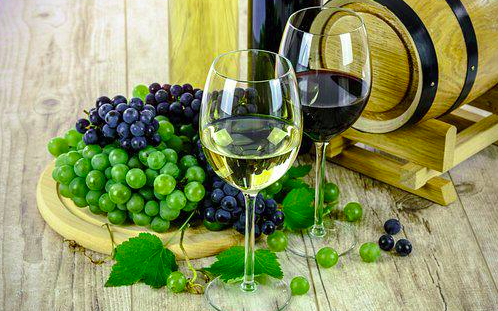The shape and size of white and red wine glasses differ depending on the type of wine they are intended to hold. White wine glasses are typically shorter and have a smaller bowl than red wine glasses. Reds, being larger and bolder wines, necessitate a larger glass to allow all of the aromas and flavours to emerge.
This article will look at the differences between red and white glass.
Key Differences Between White and Red Wine Glasses
In general, white wine glasses have smaller bowls than red wine glasses. White wine glass bowl walls will be less curved as well. The openings of white wine glasses are much narrower than those of red wine glasses.
Effect on the Senses
Usually, red wines are more full-bodied than whites; larger bowls benefit red wine glasses. The larger, rounder bowls allow more air to interact with the wine. It will allow the flavours to open up and stand out more. White wines don’t need as much aeration.
Red wine glasses, like decanters, are designed to “open up” the aromas of the wine. The bowls of white wine glasses are short, allowing the drinker to bring the wine closer to their nose, which benefits less aromatic white wines.
Red wine glasses come with a larger visible surface area, making it easier to see the viscosity and colour of the wine as it is swirled in the glass.
Length of the stem
The stem’s length is one of the primary differences between red and white wine glasses. White wine glasses typically have longer stems than red wine glasses, giving the drinker more space between their hand and their beverage.
White wines are more temperature sensitive and should be served slightly chilled. In addition, a longer stem allows the drinker to keep their hand away from the bowl, preventing the wine from warming due to body heat.
White and red wine glasses have very similar size and shape feet.
The Three Kinds of Red Wine Glasses
Red wine glasses have larger bowls and wider rims than white wine glasses. It allows red wines’ bolder, fuller flavours to ‘breathe.’ Allowing the wine enough space in the glass to absorb oxygen enables it to open up and display aromatic and taste qualities more easily. There are three types of red wine glasses:
- Full Bodied (Or Bordeaux)
The largest of the three types are Bordeaux glasses. Because of the size of these glasses, there is a lot of space between your nose and the wine. It allows ethanol vapours to pass through your nose and taste more of the wine’s aromatic compounds and less of the strong alcohol vapours. In addition, the larger opening allows the wine to flow across the entire surface of your palate. As a result, the tasting experience is more robust and comprehensive.
- Medium Bodied
Bordeaux glasses are smaller than medium-bodied glasses. As a result, they will soften some flavours and keep some of the ethanol vapours in the glass. These medium-sized glasses pair well with lighter-alcohol, old-world wines with pronounced savoury characteristics.
- Light Bodied (Or Burgundy)
Burgundy glasses complement lighter, more delicate reds well. The bowl’s space allows the aroma to accumulate. The wine will also run over the tip of the palate due to the shorter lip. It can improve the wine’s sweetness. Some people prefer champagne or full-bodied whites served in burgundy glasses.
White Wine Glasses Come in Two Styles
White wine doesn’t require as much breathing space as red wine. Use a smaller glass to preserve white wines’ delicate and subtle aromas. These narrower bowled glasses concentrate and preserve the qualities of the wine.
On the other hand, white wine glasses have shorter bowls. It allows the drinker to get closer to the wine and enjoy its aromatic qualities more fully. In addition, white wine glasses will have longer stems than red wine glasses to keep the wine as chilled as possible. White wine glasses are classified into two types:
- High-acid wine glasses
High-acid wine glasses are the smaller of the two. Their design allows the wine to move to the middle of the palate, bringing out the acidic qualities of the wine. In addition, these wines typically have a lower alcohol percentage, so the ethanol vapours will not be a problem. Popular wines for this glass include dry Rieslings, Sauvignon Blanc, and rosé.
- Full-Bodied Wine Glasses
Full-bodied wine glasses are larger and have wider openings (though still narrower than most red wine glasses). It allows the alcohol vapours to pass through the nose while emphasising the richer qualities of full-bodied whites such as Chardonnays.
Conclusion
While you can certainly get by with just one set of Glassware, if you plan on drinking various varieties, you may find that the glassware is limiting your experience—especially if you drink red wine from a smaller white wine glass. While the number of shapes and sizes available can be overwhelming, a proper varietal-glass pairing can make a significant difference.








